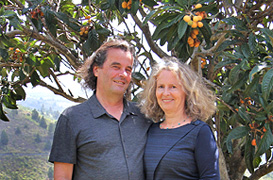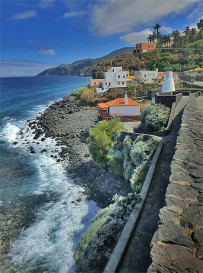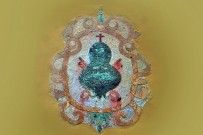-

-
We are specialists for your holidays in La Palma. With personalized assistance on-site.

Ulrich & Evelyn Roth -
Our service numbers
Write e-mail+34 822 68 00 89
+49 7442 819 85 90
We're available from Monday to Friday from 10:00 a.m. to 6:00 p.m., and Saturdays from 10:00 a.m. to 1:00 p.m.
-
Accommodations
- with pool 90
- on the seaside 42
- with internet 204
-
Northwest >>
130
- Aguatavar 7
- Arecida 6
- El Castillo 1
- Garafía 4
- Las Tricias 7
- Puntagorda 42
- Tijarafe 22
- Tijarafe Costa 6
- Tijarafe El Jesús 12
- Tijarafe La Punta 21
- Tinizara 2
-
Aridane Valley >>
225
- Celta 7
- Charco Verde 3
- El Paso 23
- Hermosilla 1
- La Bombilla 2
- La Laguna 11
- Las Manchas 24
- Las Norias 11
- Los Llanos de Aridane 25
- Puerto de Naos 45
- San Nicolas 8
- Tacande 2
- Tajuya 9
- Tazacorte Costa 5
- Tazacorte Puerto 14
- Tazacorte Villa 23
- Todoque 12
-
South >>
31
- Fuencaliente 7
- Las Indias 4
- Lomo Oscuro 1
- Los Quemados 6
- Salemera 2
- Tigalate 2
- Villa de Mazo 9
- East >> 16
-
Northeast >>
5
- Barlovento 2
- Los Sauces 2
- Puntallana 1
The town of Villa de San Andrés has been declared a cultural heritage site
Bien de Interés cultural
If you walk through the cobbled streets of San Andrés in the north-east of La Palma, you will find yourself in one of the oldest and once most important towns on the island.

Abundant fresh water flowed from the gorge of Los Tilos in Los Sauces to pour into the sea at San Andrés. A wealth that attracted many foreigners, mainly Portuguese, Catalans, Genoese and Flemings.
Already in the first years after the Conquista, the town was granted the title of "Villa", (small) town.
Around 1515, the church Iglesia de San Andrés was built. From the XVIth to the XVIIth century, the town flourished and came just after the capital, Santa Cruz.
Manor houses with thick walls of stone and clay were built, some of the coats of arms have been preserved, just like the Ermita del Pilar.
The main source of income was the cultivation of sugar cane
From the port of El Guindaste, right next to the Barranco del Agua, cane sugar, wine and rum were exported.
Later, banana cultivation was added and replaced sugar exports.
Lime delivered from Gran Canaria and Fuerteventura was burned directly at the port. It was needed for irrigation canals and in construction in general. The well restored lime kiln is another landmark of San Andrés.
Ancient buildings also include the little church Ermita de San Sebastian, the old cemetery, the Stations of the Cross (El Calvario) and the remains of the Franciscan monastery La Piedad.
The Canary Islands government has now declared San Andrés a Bien de Interés Cultural (BIC). A heritage site full of traditional and popular architecture.
The protected buildings cover an area of almost 60,000 m² inside and outside the village. Of this, about 25,300 m² form the actual historical complex, the rest is protected zone.
Palm groves, flower-filled gardens and squares together with the evergreen banana plants wrap themselves like a protective cloak around this little gem, which is now hopefully awakening to a new flowering. A visit to San Andrés is definitely worthwhile.




